5 CHAPTER 5: HOW TO PLAN EFFECTIVE AND MEANINGFUL CURRICULUM
Chapter Preview
- What is Curriculum?
- Benefits of Implementing Meaningful Curriculum
- A Teacher’s Role
- A Closer Look at the Curriculum Planning Cycle
Introduction
One of the highlights of being a preschool teacher was setting up my classroom environment at the beginning of each new school year. There was so much anticipation and excitement as I thoughtfully organized my classroom, stocked the learning centers with new materials, and planned curriculum activities. I especially enjoyed purchasing a new lesson plan book and writing up activity plans for each month. I gathered ideas from various teacher resource books that primarily focused on seasonal themes and kindergarten readiness skills – like language arts and math. As I carefully considered topics for each month, I planned for indoor and outdoor activities, music and movement activities, along with a variety of play opportunities. I thought about creative art projects and planned for engaging circle time discussions. I created quiet corners, learning centers, decorated the walls with store-bought posters, and strived to make the classroom environment safe and welcoming. Some twenty years later, as I write this text and reflect on my own experiences as a preschool teacher, there are a few questions that come to mind:
- Who was I planning curriculum for – me, the children, their families or my program director?
- How could I possibly have planned meaningful curriculum if I didn’t even know the children who were being placed in my care?
- How could I be intentional if I didn’t even know the children’s individual interests, abilities and needs?
In this chapter, we will examine how observation and documentation are used to develop effective curriculum. We will explore what curriculum is and we will discuss the benefits of planning developmentally appropriate curriculum. Additionally, the teacher’s role will be examined. Lastly, we will discuss how to plan effective and meaningful curriculum using observation, documentation, interpretation, and reflection as best practices.
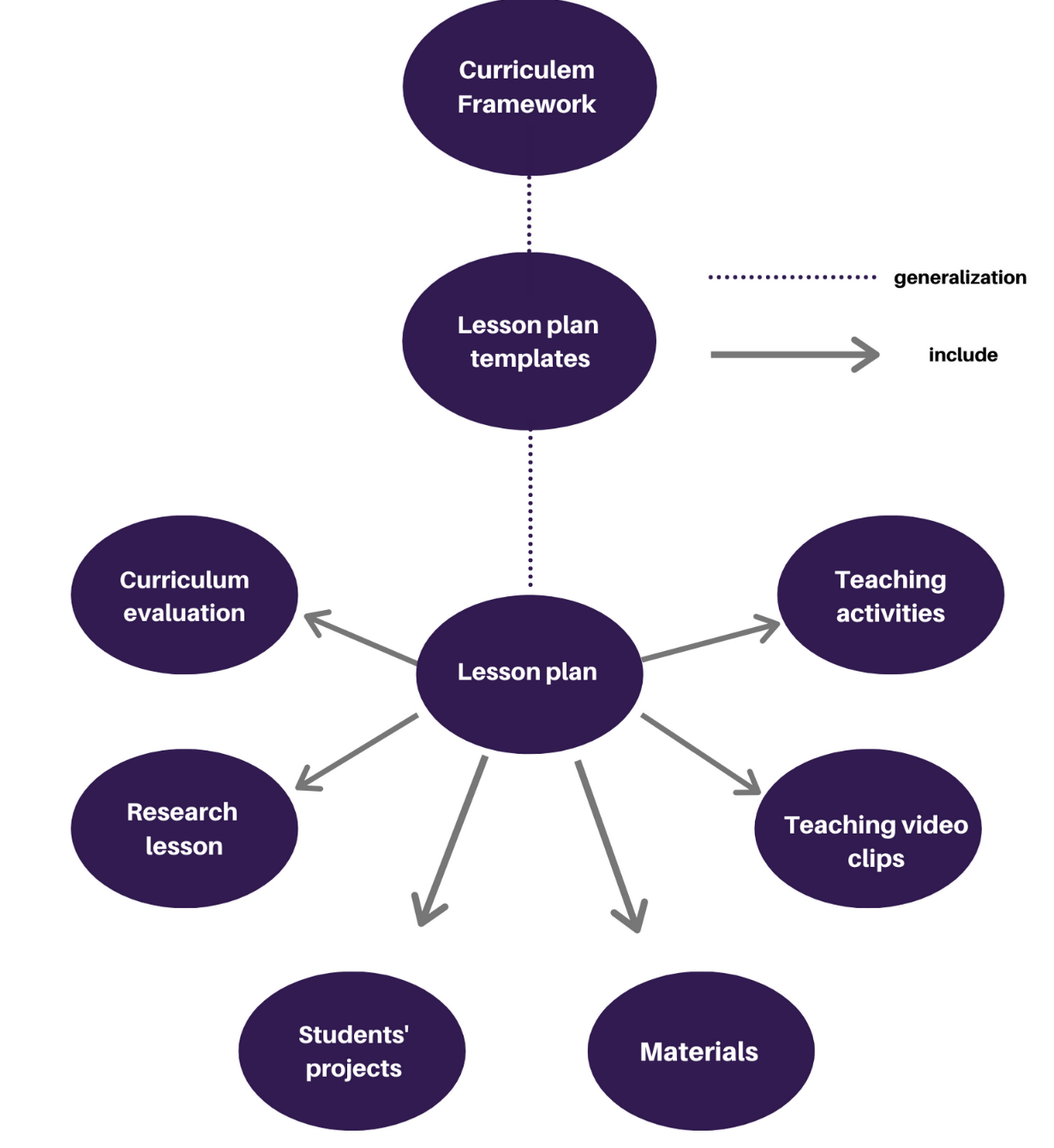
What is Curriculum?
In early care and education, we value how children process information, we recognize how important their feelings are, and we place great significance on how children learn to socialize with others. As intentional teachers, our primary goal is to incorporate curriculum that supports the “whole-child” in all domains of development including social, emotional, physical, and intellectual. The word “curriculum” can mean different things to different people. For some, curriculum can provide the framework for learning, for others it can be a variety of planned activities, still for others curriculum is a way to drive learning outcomes, goals and objectives. Curriculum can be developed by teachers, or it can be purchased as part of a prefabbed program. Curriculum can be child-directed, and it can be teacher-directed. According to a joint position paper by the National Association for the Education of Young Child (NAEYC) and the National Association of Early Childhood Specialists in State Department of Education (NAECS-SDE), “Curriculum is an organized framework that delineates the content children are to learn, the processes through which children achieve identified curricular goals, what teachers do to help achieve these goals, and the context in which teaching and learning occur” (2009). In other words, curriculum helps teachers organize the day to day activities, it outlines the learning goals and outcomes that teachers need to assess, and lastly, curriculum provides teachers with the guidance and structure that they need to teach.[2]
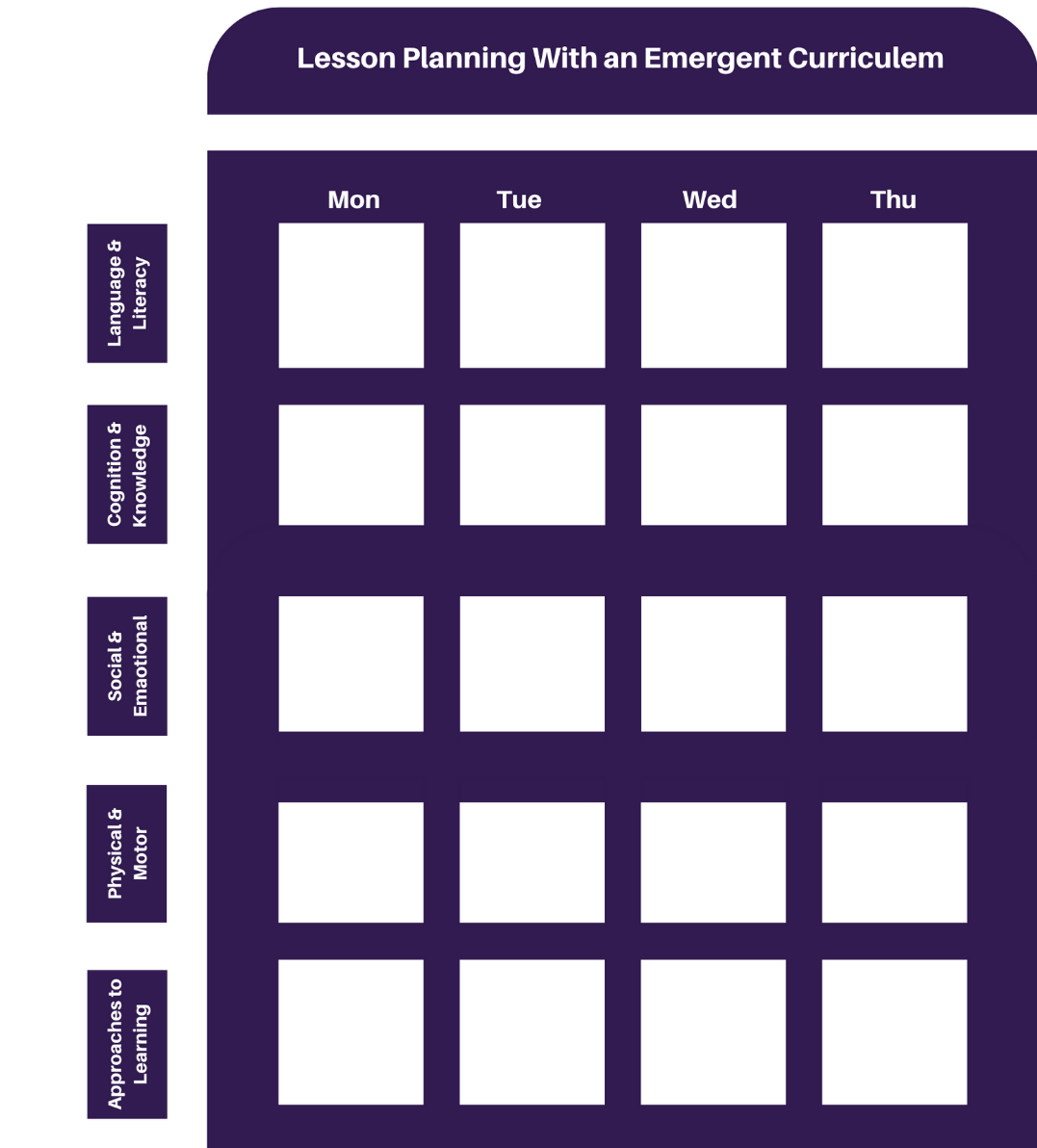
Benefits of Implementing Meaningful Curriculum
From the moment a child is born, each interaction and experience affects their brain development and lays the foundation for future success. Research on brain development shows that early experiences are essential. It is suggested that if children are not interested in what they are learning, and if it is not meaningful or connected to their cultural practices, they will not create new neural pathways in which to store new knowledge. Subsequently, children will not retain information or learn as intended. As suggested in the California Early Learning Foundations, well planned curriculum provides opportunities for children to use, build, and master skills. With every engaging activity, children are encouraged to investigate key concepts in mathematics, science, and literacy, explore their creativity, establish relationships with peers, and develop self-efficacy skills.[4]
It is important to note that thoughtful curriculum planning does not just impact children for that present moment. A high-quality program that incorporates meaningful curriculum can provide long-lasting benefits. As demonstrated with the Abecedarian Project, a vastly recognized longitudinal research study that followed a group of 111 children into adulthood, not only did the children who received high-quality child care outperform their peers in math and reading, 30 years later project participants continued to exhibit significant merits as compared to their counterparts in the control group. More specifically, children that participated in the Abecedarian Project were four times more likely to earn a college degree. Additionally, it was reported that “Twenty-three percent of the participants graduated from a four-year college or university compared to only 6 percent of the control group.” Other significant benefits included:
participants were more likely to have been consistently employed (75 percent had worked full time for at least 16 of the previous 24 months, compared to 53 percent of the control group) and less likely to have used public assistance (only 4 percent received benefits for at least 10 percent of the previous seven years, compared to 20 percent of the control group). They also showed a tendency to delay parenthood by almost two years compared to the control group. Project participants also appeared to have done better in relation to several other social and economic measures (including higher incomes) but those results were not statistically significant.[5]
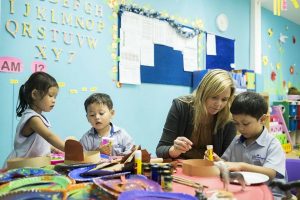
A Teachers Role
With curriculum being the cornerstone for children’s learning, how can we be certain that children are receiving reputable curriculum that reflects their varying academic abilities, learning styles, personalities, interests, background knowledge, cultural experiences and levels of motivation for learning? Teachers are the linchpin. As stated in the article “Observing, Planning, Guiding: How an Intentional Teacher Meets Standards through Play” by Patricia McDonald, “teachers are researchers, observing children to decide how to extend their learning both in the moment and by planning new play environments” (p.3).[7] For all intents and purposes, teachers play a pivotal role in setting up the environment, providing the learning experiences and guiding children so they can construct concepts, develop new skill sets, and discover who they are. Additionally, teachers are active participants in a child’s development as they watch, listen and think about what each child needs to thrive. As teachers monitor numerous situations throughout the day, they must consider when to step in and engage the children, and when to step aside and allow students to scaffold one another. At the center of it all, teachers who really know their children are better equipped to find the right balance of how to engage, motivate and challenge learners. So then, how do teachers learn about the intricate details of what each child needs? Let’s take a closer look at how observation, documentation, interpretation, and reflection are used to support children’s learning, growth, and development.
The Curriculum Planning Cycle at a Glance
Observation: Looking and Listening
- May be Spontaneous or Planned
- Watch and listen to children while they explore, investigate, play, problem solve, interact and socialize
- Keep an open mind as you gather evidence and artifacts, and look for what children CAN DO
- Observe children during daily routines, transition times, mealtimes, and while inside and outside
Documentation: Recording and Collecting Objective Evidence
- Record what you see and hear
- Include date, time, and location
- Include child’s first name
- Include who else is engaged in the activity
- Document the purpose of the activity – highlighting what the child is supposed to do
- All recorded evidence should be concise, factual and have descriptive details
- Use a variety of observation and documentation methods and tools to collect evidence
- Record actual evidence as you see it (avoid summarizing or assuming)
Interpretation: Analyzing Data
- Ask questions: What is this action telling me?
- How did the child approach the activity and how long did the child stay engaged?
- Is this behavior typical for the child or unusual?
- Would this child benefit from peer scaffolding?
- Does this child need more individualized support?
- Does this child have more feisty, flexible or fearful temperament traits?
- How can I motivate this child?
- Were there any new play patterns or social interactions?
- Did the child master any new skills or milestones?
- Are there any skills or milestones that need further support?
- Were there any “red flags”?
- When analyzing behavior, consider the ABCs: the Antecedent (What happened BEFORE), the Behavior (as it happens) and the Consequence (what happened AFTER)
- Review previous observations to monitor progress over time
Reflection: Planning for the Next Step
- How can I set up the environment to incorporate the children’s interests?
- What resources and materials will I need?
- What milestones, learning goals and objectives can I further support with this activity?
- How can I create a “good fit” for this child’s temperament?
- Did I acknowledge children when they met expectations, and did I provide genuine praise to reinforce positive behaviors?
- Am I setting clear expectations?
- Do I need to change the routines or schedule?
- Have I incorporated all the developmental domains and considered the whole child?
- Did I plan for individual activities, small group, and larger group opportunities
Implementation: Applying Best Practices
- Create quiet and active spaces
- Plan for indoor and outdoor learning experiences
- Provide a variety of materials that will encourage open-ended play and exploration
- Follow a consistent routine and schedule
- Plan teacher-directed activities and create centers based on children’s interest
- Consider the project approach and allow concepts to develop over time rather than a one and done
- Create a balance of play-based learning opportunities and skill-based learning opportunities?
- Plan to accommodate the diverse needs of each child
- Create a respectful and caring classroom environment that is supportive and nurturing to all learners
A Closer Look at the Curriculum Planning Cycle
Children reveal who they are and how they think through their actions and behavior. How they play with others, how they use materials, and even the types of activities they choose to tell us a story. Each child has their own story to tell and it is up to us, as intentional teachers, to gather essential evidence and artifacts that can be used to inform our decisions on how to best support each child’s learning, growth and development. Curriculum should be thoughtfully planned, challenging, engaging, developmentally appropriate, culturally and linguistically responsive, comprehensive, and likely to promote positive outcomes for all young children.[8] To guide our decision making and to effectively implement meaningful curriculum we must utilize the Curriculum-Planning Process. Let’s examine and discuss the 4 steps of the cycle.
Step 1: Observation – Looking and Listening
To develop effective curriculum, quality observations must be conducted. Whether spontaneous or planned, formal or informal, in-depth observations provide teachers with an advantage point. With each observation, teachers gain valuable insight that helps them gauge a child’s zone of proximal development, and with that information, teachers can decide on how to best scaffold that child’s learning. Likewise, teachers who conduct ongoing observations discover each child’s baseline knowledge, and with that data, they can develop curriculum that supports children’s play and learning in a developmentally appropriate manner. Furthermore, a teacher who regularly observes can track children’s interests which in turn helps her to select materials and resources that will fascinate, intrigue, challenge and engage the children. Thus, when teachers take detailed notes and record objective facts, they recognize each child’s individual pace, temperament, capabilities, interests and needs. It is with this vital data that they can ultimately meet children where they are at developmentally and map out where they need to go by intentionally setting reasonable expectations and goals.
To truly discover a child’s intent, teachers need to be fully attentive to what children are doing and saying while they are playing and interacting with others. To be fully attentive requires a particular state of mind. Rather than being actively engaged with children or guiding their behavior or directing their play, teachers need to find moments where they can focus on looking and listening. Teachers need to approach each observation with an open mind – free of bias and preconceived notions, and they need to have an open lens to see what children are actually doing. Sometimes we can only look and listen for a brief moment; sometimes we can look and listen for a longer timeframe. Either way, we need to take in all that we are seeing and hearing so that we can discover a window into the child’s thinking and find clues as to what they are capable of.
An observation is often prompted by a question. Here are a few questions that might guide your next observation:
“In what ways are the children using the new materials in the block area?”
“Which children can cut a zig-zag line with scissors?”
“Who will recognize their name tag that is posted on the outside table?”
“Will Sofia play with a peer today or keep to herself?”
“I wonder how Jackson will do at drop-off today?”
“I’m curious to see how the children will react to painting with fall leaves and who will try?
“What activity area are the children using the most while outside?”
As teachers observe to find answers to questions like those mentioned above, they will need to record what children are doing and saying. No matter which tool, technique or method is used, teachers need to document what they are observing.
Step 2: Documentation – Recording Evidence and Gathering Artifacts
Documentation provides the vital evidence and visual artifacts that teachers need to accurately track each child’s learning, growth and development in order to plan developmentally appropriate curriculum. Documentation helps teachers hold into memory the significant moments of play, exploration and learning. To gather data, teachers can opt to use several tools and techniques. Whether a teacher uses an anecdotal note, frequency count, or checklist to gather documentation, the goal is to have an extensive collection of factual evidence, along with work samples, that highlight each child’s actions and behaviors, verbal and nonverbal communication skills, social interaction and intellectual abilities.
Let’s take a moment to reiterate information that was discussed in a previous chapter about how to write effective evidence. First, all documentation needs to be factual. Teachers need to write down exactly what the children do and say. Second, it is suggested that you record as many descriptive details as you can, while remaining as objective as possible. Third, document the whole child’s development. More specifically,
- Look for what children “can do” and note the milestones that have been mastered
- Track language development by recording pertinent conversations
- Track play patterns to see who engages in cooperative play and who prefers to play alone
- Watch the interactions and social dynamics between peers
- Next, in order to track a child’s development over time, remember to include the following information: date; time; location and setting; activity; and note the children that are engaged in the activity. Lastly, to plan meaningful curriculum, you will need to regularly review all the documentation you have collected so that you can ponder and interpret what was observed.
Pin It! Documentation Sample
Date: 2/10/19
Time: 9:30 -9:45
Location and Setting: Inside during Active Investigation Time. The following centers were open: Science – magnifying glass and leaves, Art – painting with pom poms, blocks with transportation vehicles, computer station – Clifford the Big Red Dog.
Activity: Science Area
Children Present: Hannah and Zoey
Hannah and Zoey were in the science area. They scooted their chairs up to the counter where the class pet gecko was perched. “Hello, Gex. How are you today? What are you eating? Asked Hannah. I love Gexy Gex don’t you? Zoey asked Hannah. “Yeaaah,” said Hannah. “I wish I had Gex,” said Zoey. “Me too!” Said Hannah. The 2 girls sat next to Gex the Gecko until it was clean up time (about 10 minutes). Hannah sat with her back to Zoey. Zoey played with Hannah’s hair (brushing it with her fingers maybe braiding it or putting it in a ponytail). They continued to chat back and forth to each other.
What are you able to interpret from this interaction?
You can learn more about documentation in this video by First 5 California “For the Record: Documenting Young Children’s Learning and Development”: https://www.youtube.com/watch?v=-WAy474XE6s
Step 3: Interpretation – Analyzing Observation Data
Before a teacher can reflect and plan developmentally appropriate curriculum, they must first interpret and analyze the documentation they have gathered. Ideally, as you observe and document, you are in the moment gathering snippets of detailed information and writing down objective facts. Once you have collected your data, only then will you begin to analyze “what does this all mean?”. As you review your documentation, you begin to think about each child’s individual actions, mannerisms, and behaviors, as well as ponder over peer interactions and group dynamics. Planning developmentally appropriate curriculum is somewhat like putting a puzzle together. As you wonder about the “why, who, what, when and how” you begin to put the pieces in place and generate potential curriculum ideas. First, you think about what the child can do on their own, and the milestones they have already mastered. Next, you think about if you are meeting each child where they are at developmentally. Then, you look for the areas of development that need further support. Lastly, you think about the zone of proximal development and how you might scaffold the children’s learning so they can reach their potential learning goals. Ultimately, your interpretations will guide your planning efforts. Let’s review the chart below:[9] The three zones of proximal development.
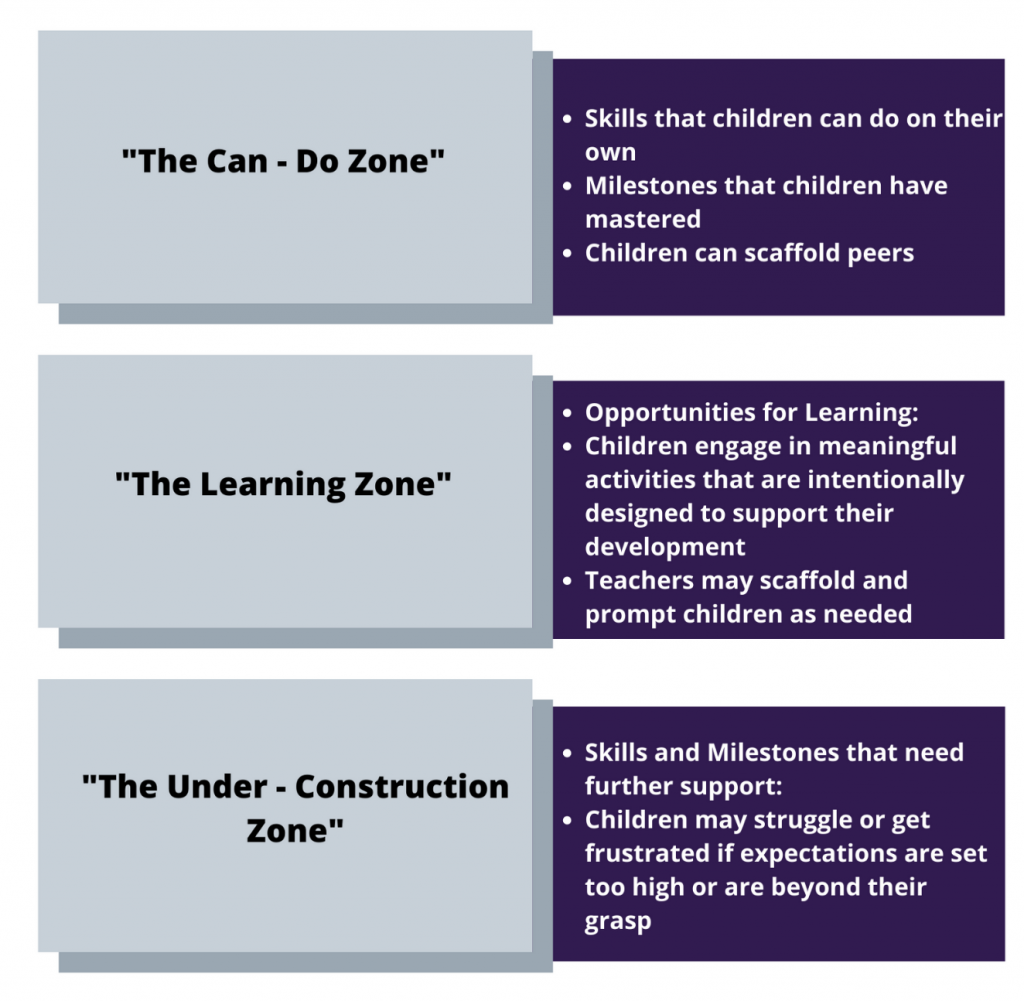
Besides analyzing documentation on your own, you can share information with your co-teachers. With factual notes and work samples that document what a child does or says, teachers can collectively discuss what they think, and they can pose additional questions. For example, at some programs, one teacher works a morning shift and a co-teacher works in the afternoon. Although they each will have their own set of observations, having the opportunity to collaborate and share information about the children in their care will only enhance their effectiveness when planning curriculum. Here are some possible questions they can ask each other:
- “What growth do you see?”
- “Are the peer interactions the same in the afternoon as they are in the morning?”
- “What are your thoughts on this behavior?”
- “How did you handle this transition?”
The high-quality practice of collaborating with co-teachers provides both professional and ethical support. When co-teachers are able to meet and discuss their observations, not only are they able to share their successes, they can also share their struggles. A co-teacher who is working alongside you will be familiar with the children and may have valuable insight that will help with your curriculum planning. They may be able to offer suggestions from a different perspective, as well as provide encouragement and empathy as needed. Another benefit of collaborating with a co-teacher is having the opportunity to share resources and materials with each other. Shared resources can extend curriculum possibilities.[11]
Whether you analyze your data on your own or collectively with a co-teacher, it is the careful interpretation of observations and documentation that generates ideas for the next steps in planning curriculum.[12]
Step 4 Reflection: Planning for the Next Step
It is during the reflective process that interpreting the meaning of children’s behaviors and interactions becomes important. These interpretations give us insight into each child’s story. Each child’s story informs our responsive practice. With this valuable insight, we can:
- Adapt the environment
- Modify the daily schedule and/or routines
- Make decisions about how to guide the children’s learning based on what the child knows and can do as well as what the child is ready to try.[13]
Curriculum planning requires a considerable amount of time. Teachers need time to observe and collect documentation, they need time to interpret their data, and they need time to reflect on how to use that data to plan effective strategies that will foster a child’s learning. High-quality preschool programs that support intentional teaching allocate time in teachers’ schedules for them to reflect and plan curriculum individually and collectively as a team.[14]
As we reflect, we must ask ourselves a wide range of questions. The answers to these questions lead to individualized care and learning. Let’s look at a few questions you may ask yourself as you begin to plan developmentally appropriate curriculum:
- What skill or activity does the child appear to be working on?
- What learning strategies is the child using to play with different toys?
- Does the child engage with objects or people differently than a month ago? What has changed? What has not changed?
- Do my actions affect the outcomes of the child’s experience? How so?
- How does the information relate to goals for the child? The family’s goals? The program’s school readiness goals?
Once we have reviewed all our data we can plan meaningful curriculum. The most effective curriculum will:
- Motivate children to explore their environment
- Inspire children to investigate various centers and activities
- Encourage children to create with new materials
- Allow children to engage in conversations and prompt them to ask questions
- Prompt children to interact with peers
- Permit children to problem solve
- Celebrate diversity and embrace uniqueness
- Accommodate each child’s learning styles and individual needs
As teachers reflect on children’s play, they discover possibilities for designing curriculum to sustain, extend, and help children’s play to be more complex and, consequently, support the children’s continual learning. Teachers review ideas for possible next steps in the curriculum. Possible steps might include adding materials to interest areas, books to read with large or small groups, activities to do in small groups, or a topic to investigate over time with the children. With clear ideas or objectives in mind, teachers plan curriculum that includes strategies to enhance the learning of all children in a group, as well as strategies to support the learning of individual children.
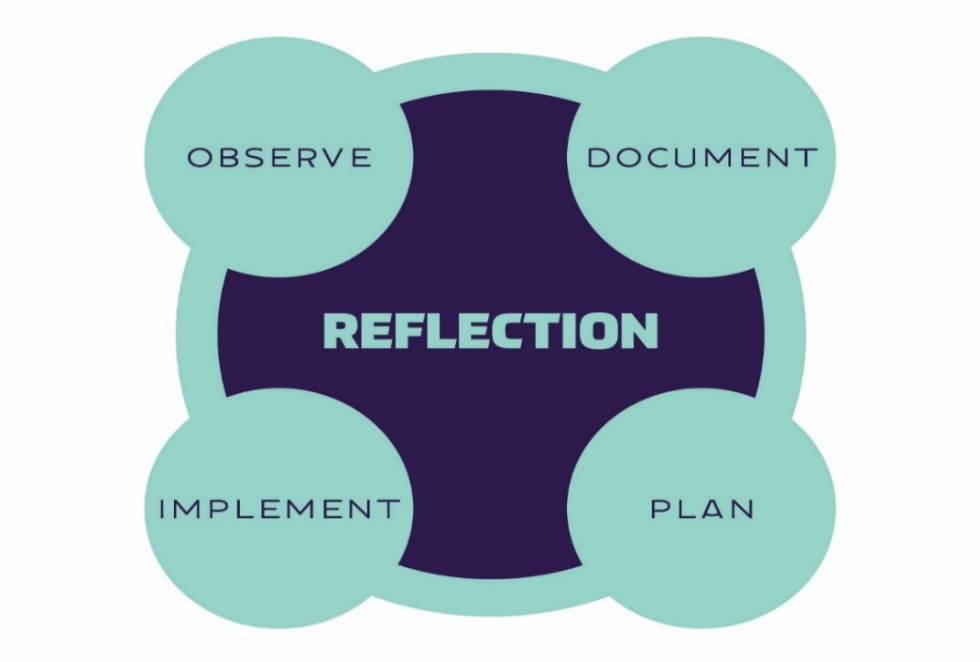
Pin It! Observation and Documentation
Date: 10/10/19
Time: 10:45 – 10:55 am
Location and Setting: Inside during open exploration the following centers were open – easel painting, blocks with fall materials, dramatic play with firefighter and homelife, math center with pumpkin cut outs for counting
Activity: Dramatic Play Area and Library Area
Children Present: Joey
- Joey played in the dramatic play area. He was dressed up in the firefighter outfit. He held the toilet paper roll in his left hand and pointed it towards a basket of stuffed animals. As he waived the toilet paper roll back and forth (side to side) he said “psssshhhhhsssshhh.” After a minute or so, Joey dropped the toilet paper roll and picked up a stuffed doggie from the basket. He took the stuffed animal to the table. As he pet the doggie, he said “You’re ok, You’re ok aren’t ya.” He then kissed the doggie on the nose, picked it up and carried it over to the library area where he sat down on the carpet square. He put the dog in his lap and started to look through a book.
Interpretation:
- With the recent fires, I wonder if Joey saw firefighters on the news or working in his neighborhood?
- I wonder if Joey has family members that are firefighters?
- I wonder what other community helpers would be interesting to explore?
- Joey has not been observed reading before, I’m curious to see what milestones he has mastered? Can he turn the pages? Can he recognize letters or words? Can he recall information?
- Joey played by himself. In previous observations he played with Martin. I wonder if they had a disagreement with Martine. I wonder if Joey needed time to himself. Maybe Martin wasn’t interested in playing firefighters.
Reflection:
- What materials can I add to the dramatic play area to extend Joey’s interest in pretending to be a firefighter?
- Are there storybooks about community helpers that highlight firefighters?
Step 5: Implementation
Once a plan has been formally written, teachers will implement it accordingly. While implementing the plan, teachers watch and listen to determine if the curriculum was effective. They will watch how children respond to the activities, materials and resources, and how they interact with peers and the environment, and how they process new information. In essence, teachers are looking for “the light bulb to go off.” It is during the implementation step that the curriculum planning cycle begins again.
For the past few weeks, children in Miss Emily’s class (ages 3-5 years) have been watching the crops across the preschool grow. During lunchtime, Miss Emily heard the children talking about what they had for lunch. Later in the day, the children watched the sprinklers water the yard and ask the teacher about how the water gets to the sprinklers to water the grass. While playing outside at the sensory table, four children are fascinated with pouring and dumping water into pipes and seeing how far it can travel.
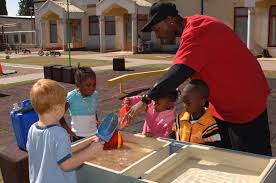
Observation: Lucas is somewhat cautious in joining others in play. He stands to the side and watches others as they play.
Interpretation: Lucas appears to want to join the play, but may need just a little bit of support. I plan to watch for moments when he is on the sidelines of play, and find ways to invite him into the social play, and stay with him to support him in his encounters with the other children.
Questions to Consider
What can you infer about the children’s interests?
What can you infer about their knowledge base?
It would be safe to say that these children understand that for plants to grow, you need to water them. It would also be safe to infer that the children are most likely interested in how water travels, as you observed their actions at the water table and their questions of where and how water gets to sprinkler systems. As an intentional teacher, with your observations, you would maybe consider doing your next unit on water systems where you can incorporate all developmental domains, based on the children’s interests.
Conclusion
While some planned curriculum activities might be based on a teacher’s knowledge of age-appropriate developmental milestones, other activities might be prompted by children’s interests or ideas, while other activities might be suggested by the children’s families. To plan meaningful curriculum teachers are encouraged to utilize the curriculum planning cycle. Through careful observation, documentation and interpretation teachers collect evidence and gather artifacts that prompt inquiry as to what children know and need. With that information teachers can reflect, plan and implement effective curriculum so that children can thrive as they master the major developmental milestones and meet school readiness goals and objectives.
To ensure high-quality practice, teachers should consider incorporating daily routines, structured and unstructured activities, as well as space for self-discovery. Curriculum should be designed to encourage children to explore their classroom environment, socialize with others, and challenge themselves to reach new levels. As suggested by NAEYC, when planning curriculum teachers should consider using an assortment of materials that are appropriate to each child’s age and stage of development. Well -planned curriculum considers each child’s individual needs and includes adaptations for children with special needs and disabilities. Lastly, for curriculum to be truly meaningful and engaging it should be reflective of each child’s cultural background and home-life practices.[17]
Footnotes
[1] Image by College of the Canyons ZTC Team is licensed under CC BY 4.0
[2] Patterson, S. (2013). How Do We Define an Early Childhood Curriculum? Retrieved from https://soprislearning.wordpress.com/2013/02/19/how-do-we-define-an-early-childhood-curriculum/
[3] Image by College of the Canyons ZTC Team is licensed under CC BY 4.0
[4] From Early Child Development by World Bank, Public Disclosure Authorized.
[5] Virginia Tech. (2012). Benefits of high-quality child care persist 30 years later. Retrieved from https://research.vtc.vt.edu/news/2012/jan/19/benefits-high-quality-child-care-persist-30-years-/
[7] McDonald, P. (2018). Observing, Planning, Guiding: How an Intentional Teacher Meets Standards through Play. Retrieved from: https://www.naeyc.org/resources/pubs/yc/mar2018/observing-planning-guiding
[8] Ages and Stages of Development by CDE is used with permission.
[9] The Integrated Nature of Learning by CDE is used with permission.
[10] Image by College of the Canyons ZTC Team is licensed under CC BY 4.0
[11] Davis, L. (2019). Teacher Collaboration: How to Approach it in 2019. https://www.schoology.com/blog/teacher-collaboration
[12] The Integrated Nature of Learning by CDE is used with permission
[13] Observation: The Heart of Individualizing Responsive Care by the Office of Head Start is in the public domain
[14] Preschool Curriculum Framework Volume 1 by the California Department of Education is used with permission
[15] Image by Ian Joslin is licensed under a CC-BY 4.0.
[17] NAEYC. (n.d.). 3 Core Considerations of DAP. Retrieved from https://www.naeyc.org/resources/topics/dap/3-core-considerations